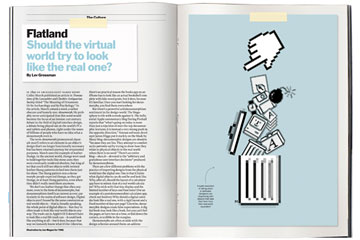
(3 of 3)
It's Microsoft, which has historically played catch-up to Apple in design, that has led the charge into the postskeuomorphic future. Last October, Windows 8 launched with a striking and decisively unskeuomorphic look. Based on brightly colored tiles rather than a traditional desktop, it's highly animated and almost entirely abstract--it's as if Mondrian designed an operating system. Windows 8 has a compelling integrity: it makes a clean break with reality.
Windows 8 has caught a lot of flak from critics who say it lacks the user-friendliness of the traditional skeuomorphic desktop. And that's true: its cleanness and crispness come at the expense of familiar signposts and little visual cues, like shadows and highlights, that tell users in subtle ways where they're supposed to look and what they're supposed to do. It's possible for software to be too flat. Skeuomorphism isn't inherently bad when used responsibly. There's nothing wrong with being user-friendly.
But now Apple, for a wonder, is chasing Microsoft. It remains to be seen how far iOS7 and OS X 10.9 will go in dispensing with skeuomorphism, but it's clearly time for a change. Over the past decade Apple's hardware under Ive and its software have diverged, the hardware becoming sleeker and simpler and more abstract, the software still clinging to realistic forms and details. With Ive running the whole show, hardware and software are likely to converge again--the software will stop mirroring reality and start simply being itself. In the past Ive has said of his approach to design, "You cannot disconnect the form from the material--the material informs the form." The material of software is, ultimately, pixels and electrons. Going forward, we can expect its form to reflect that.
